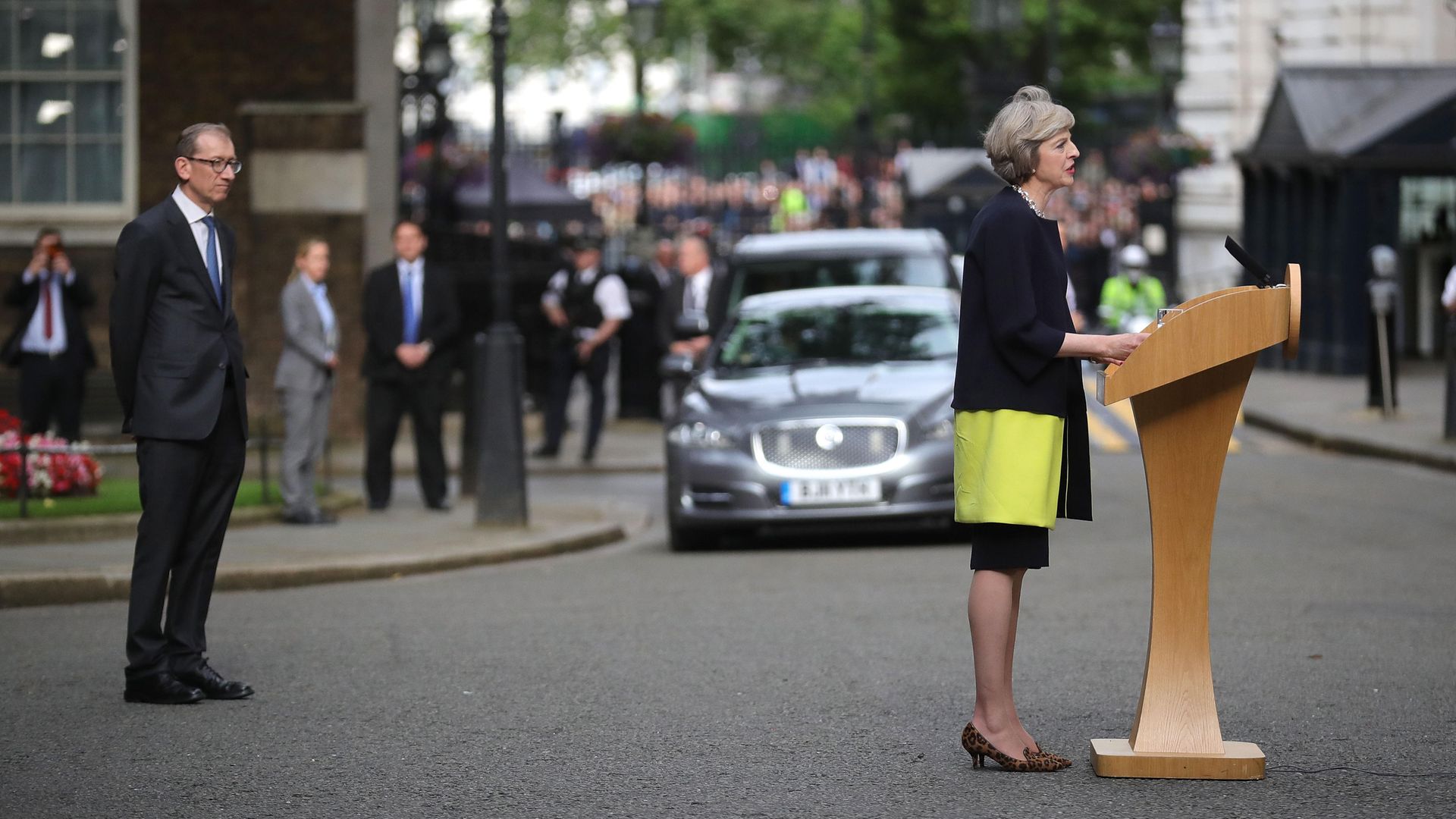
There is a temptation, when revisiting the tenure of a prime minister widely agreed to have been a failure, to reassess it as more successful than people believed at the time.
When it comes to Theresa May’s premiership – which began five years ago this month – this is a temptation that is well worth resisting. May might have come up with a better Brexit deal than the one agreed by Boris Johnson, and might not have indulged the same types of terrible cabinet behaviour as her successor, but in many ways big and small it was May’s mistakes that set the way for everything that came next.
Despite supporting Remain, May owed her premiership entirely to Brexit. David Cameron had pledged throughout the referendum campaign that he would continue as prime minister no matter what the result, only to inevitably announce his resignation just hours after the result – a Leave win – became clear.
May managed to become the UK’s political leader without even the tens of thousands of Conservative members taking a vote on whether she should, thanks to a shambolic 2016 contest in which her leading rivals dropped out amid scandal and disarray, or – in the case of Boris Johnson – betrayal by his own campaign.
Theresa May might have taken her own fragile mandate alongside the narrowness of Leave’s margin of victory to take a cautious, reconciliatory path, to try to be a prime minister for the whole nation, instead of the faction-within-a-faction that ran the official Leave campaign.
As we all know, that’s not what May did. In what must now surely be seen as a misguided strategy, she tried to bang the drum for the most ridiculous fringes of the Brexit faction in a bid to create the political space to negotiate a fairly hard but actually workable Brexit deal.
Even if we are generous and assume that strategy was adopted with the best of intentions, it couldn’t have failed more spectacularly. It was this approach that normalised at first exaggerated and then outright false claims about what was achievable from different varieties of Brexit – leading to the polarised climate in which discussion of any kinds of trade-off rapidly got dismissed as a mere extension of ‘Project Fear’.
May’s hopes of turning that chaos into a sensible Brexit outcome were further dashed by her decision to call a snap general election in 2017. On the face of it, few would have called this a mistake at the time the decision was made: the Conservatives appeared to have a safe double-digit lead in the polls, but only a wafer-thin Commons majority. Given the tough decisions Brexit would entail, extending that majority appeared to be a no-brainer.
The following campaign was something of a perfect storm, some of it beyond May’s control but much of it well within it. The expectation of a Conservative landslide helped Labour, not least through giving voters who disliked the idea of Jeremy Corbyn as prime minister the confidence to vote for Labour without concern of this actually happening.
The low Labour expectations also likely assisted the party’s manifesto: having been told for two years that Labour’s leadership could barely tie their own shoelaces, the launch of a seemingly costed manifesto containing many popular policies provided a bigger boost than a good manifesto usually would. Expectations matter.
The Conservative manifesto meanwhile skipped right past the trying-to-win-an-election part and instead jumped straight to trying to manage Conservative backbenchers after an assumed victory.
As a result, the 2017 Conservative manifesto contained almost no policies to help candidates and supporters on the doorstep to persuade voters to back the party, but instead contained numerous withdrawals of previous pledges.
While Labour promised nationalised trains and water, the Conservatives withdrew the promise to keep the pensions triple lock. Labour pledged free tuition fees, while the Conservatives threatened to take granny’s home if she suffered from dementia.
May’s could claim her manifesto was more responsible than Labour’s – and perhaps was making a bid to fix some of the UK’s long-running problems – but by failing to win over voters, it weakened May and also taught the authors of 2019’s Tory manifesto not to do anything so stupid or practical as to be honest with voters, instead promising the world and leaving the details for later.
The result of the 2017 election left an absolute mess. Instead of a larger majority, May was left with no majority at all and faced with that desperate circumstance took the only option she saw as left open to her: an alliance with the DUP, vastly complicating the Brexit deal she was trying to achieve.
Back then, four years ago, the rejoin or second referendum movements were still in their infancy, and Labour had not campaigned on either. If there was ever a window to try true cross-party cooperation, this was it – and it was rejected absolutely out of hand.
By tying every party in to the negotiations, May might have found it possible to get votes later. Instead, she tried to plough her own course and just force people to do it her way or to take no-deal.
With her fractious and unworkable governing coalition, she had zero hope of passing any non-Brexit legislation or gaining any kind of legacy beyond that flagship policy. Tethered to Brexit as her only hope of a way through the mire, May let all of the norms and common practices of British politics crumble.
For a country without the protections of a written constitution, such norms are vital – built over decades, if not centuries, but destroyed in minutes. May might have only been trying to use these in a limited way, but by setting the precedents that she did, she opened the door for Johnson and Dominic Cummings to do the same, but to far greater extents.
Many readers of this newspaper will look at the Johnson administration and think, rightly, that May’s government looked practical or sensible by comparison, perhaps even that it had a better average calibre of ministers – or that with decisions like firing Gavin Williamson over an alleged security leak – a better set of standards.
But there can be no escaping the fact that the Johnson administration is an inevitable product of the way May mismanaged her premiership. The assessment five years on should match the assessment at the time: May was not, in any sense, a good prime minister.
What do you think? Have your say on this and more by emailing letters@theneweuropean.co.uk










